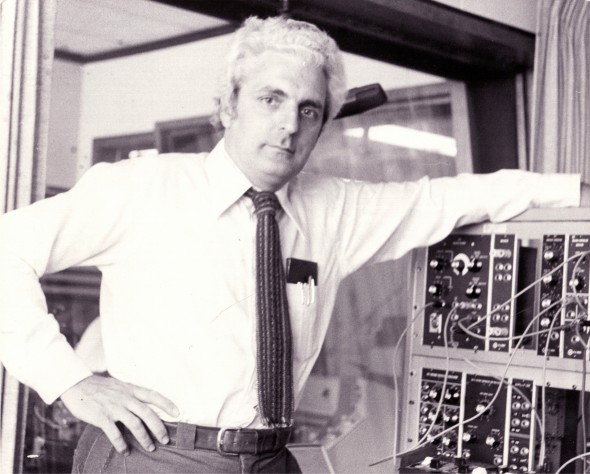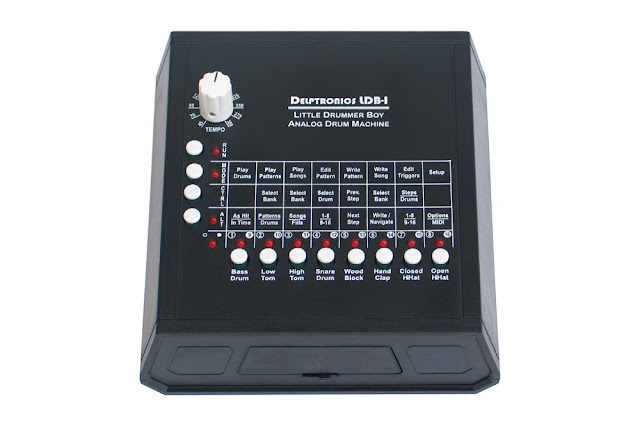

"SAN JOSE, CALIFORNIA: music and audio technology developer Muse Research & Development is proud to announce availability of RECEPTOR QU4TTRO and RECEPTOR TRIO, the latest additions to its line of dedicated hardware plug-in players, as of March 28...
With the introduction of these two new models, Muse Research now offers a complete RECEPTOR range priced to suit both budgetary and application requirements; yet each enable recording engineers and performing musicians to run popular virtual instruments and effects software in a high-performance, self-contained, tour-proven package with maximum performance and convenience.
RECEPTOR QU4TTRO, the company’s top-of-the-line model, is designed for demanding studio applications, film and TV composers, and touring bands wishing to simultaneously process keyboards, guitars, and/or vocals. This fourth-generation RECEPTOR is powered by a fastest-in-class 3.9GHz (peak) Quad-Core Intel processor and is equipped with 16GB of RAM and a voluminous 2TB 7200 RPM hard drive (or optional 256GB or 512GB SSD) to run even the most demanding virtual instruments and effects with ease.
RECEPTOR TRIO is the more affordable ‘middle child’ of the RECEPTOR family, and also features a Quad-Core Intel processor — only slightly slower than its big brother’s super-speedy affair, 8GB RAM, and a 1TB 7200 RPM hard drive (or optional 256GB or 512GB SSD). No slouch by any means, RECEPTOR TRIO is a seriously-capable, cost-effective system suited to touring and studio professionals, as well as higher-end project studios, with ample power to run many plug-ins at once.
The RECEPTOR range was designed to tackle even the most demanding software synthesis and advanced signal processing tasks that face today’s modern musician. RECEPTOR QU4TTRO and RECEPTOR TRIO take this one step further, thanks to TetraCore technology. This proprietary software threading and load balancing technology prioritises musical tasks over all others and optimises available processing resources to extract maximum performance from those four CPU cores. In turn, this lets the system run more demanding plug-ins at lower latencies than unoptimised platforms, but, more importantly, it makes RECEPTOR QU4TTRO and RECEPTOR TRIO feel much more like a real hardware instrument or effects processor as a result. Users will immediately notice how natural and ‘tight’ their favourite virtual instruments and effects sound with TetraCore.
Supporting the new TetraCore processing engine is a new and improved 64-bit operating system featuring Intellibridge technology to provide simultaneous support for 32- and 64-bit plug-ins. Users can comfortably run large, multi-gigabyte sample libraries that occupy more than 4GB of RAM while still running their favourite tried-and-tested 32-bit plug-ins at the same time. RECEPTOR TRIO is perfectly primed to do just that with 8GB of onboard RAM at its disposal while RECEPTOR QU4TTRO can capably handle even the largest sample libraries with its 16GB helping of RAM.
Even more impressive is what RECEPTOR QU4TTRO and RECEPTOR TRIO users can do with that extra RAM when working with LIVE MODE, a proprietary performance feature for preloading virtual set lists (up to the limits of the available RAM) and moving instantly from preset to preset. No more waiting for large presets to load while onstage since LIVE MODE preloads presets for instant access when moving from song to song or cue to cue. Try doing that on a bog standard laptop!
RECEPTOR QU4TTRO and RECEPTOR TRIO users have an abundance of stellar sounds to use with that breakthrough LIVE MODE since each model comes complete with over $900 USD of software plug-ins for free! Ranging from perfect pianos to searing synths, and running the gamut from guitar amp models to vocal harmonisers, too, there’s surely something there to suit most musical tastes and needs. Needless to say, sonic horizons can be affordably and easily expanded as both new models now ship with Native Instrument’s KOMPLETE 9 and KOMPLETE 9 ULTIMATE collection of premium sonic tools for production, sound design, and live performance pre-installed and ready for evaluation and authorisation. And there are also dozens of other third-party plug-ins pre-installed in demo mode, making the search for that ‘just right’ sound for any music project or performance a breeze.
RECEPTOR QU4TTRO and RECEPTOR TRIO are equally at home on the road or in the studio, and integration into any performance or recording environment is easier than ever thanks to the bundled PreSonus AudioBox 1818VSL 24-bit/96K USB 2.0 Recording Interface. This pairing provides both models with support for four times the analogue I/O of their predecessors, with eight analogue inputs and outputs, eight ADAT optical digital inputs and outputs, a stereo S/PDIF digital input and output, and digital word clock output for integration with other digital audio devices. This massive 18- channel I/O count propels RECEPTOR QU4TTRO and RECEPTOR TRIO to new heights, letting users send individual instruments to their own dedicated outputs, process multiple independent streams of audio, or simultaneously process guitars, vocals, basses, and other instruments while generating sounds using virtual instruments. Coupled with that PreSonus audio interface, RECEPTOR QU4TTRO and RECEPTOR TRIO are more than capable of serving as the central hub to anyone’s musical universe!
The new models compliment the existing entry-level RECEPTOR VIP, taking the RECEPTOR range to the next level of power, ease of use, and flexibility. With RECEPTOR QU4TTRO and RECEPTOR TRIO, Muse Research has successfully strengthened RECEPTOR’s robust, roadworthy plug-in-playing status as the go-to performance instrument of choice for thousands of professional musicians worldwide.
Quite simply, RECEPTOR QU4TTRO and RECEPTOR TRIO possess all the power, memory, storage, and I/O needed to adapt to any recording or performance scenario. Wherever the superior sounds of virtual instruments and effects are needed, RECEPTOR QU4TTRO and RECEPTOR TRIO will deliver high-quality results with exemplary performance and stability, all in a self-contained, roadworthy, and affordable package.
The Muse Research RECEPTOR product line is available through select music retailers in the US and Canada, as well as through music equipment distributors worldwide. The Muse Research dealer network from within the United States offers the products at the minimum advertised prices of $1,699.00 USD (RECEPTOR VIP), $2,499.00 USD (RECEPTOR TRIO), and $2,999.00 USD (RECEPTOR QU4TTRO). International distributors set their own pricing for their respective territories.
If there is no stocking retailer in your area, a RECEPTOR can be configured to your specifications and purchased via the Plugorama.com website (www.plugorama.com), which also offers virtual instruments and effects packages for use with RECEPTOR starting at $29.99 USD"



































































